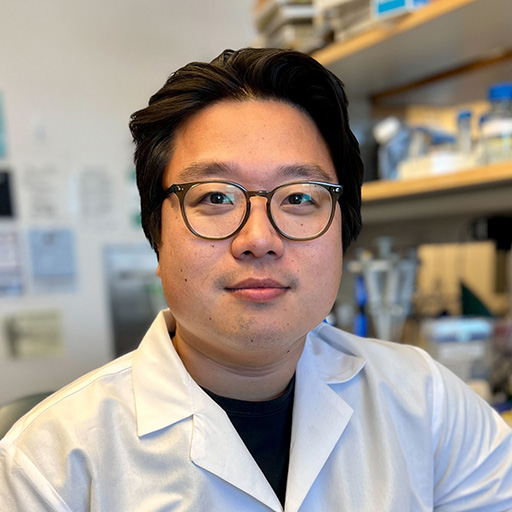Identification of Novel Tyrosine Kinase and G-Protein Molecules

About the Research Project
Program
Award Type
Standard
Award Amount
$45,000
Active Dates
April 01, 2001 - March 31, 2002
Grant ID
M2001009
Summary
In developing a strategy for treating or preventing new blood vessel formation that causes wet macular degeneration, scientists need to gain a better understanding of endothelial cells, the cells that form the inner walls of blood vessels. It is thought that abnormal blood vessel formation in AMD is caused by the inappropriate growth of these endothelial cells. Dr. Duh’s goal is to identify important molecules in endothelial cells that contribute to their over-growth. He is searching for two specific classes, or types, of molecules known as tyrosine kinases and G-proteins. These molecules are known to play an important role in the growth of many different types of cells. This project builds upon last year’s BrightFocus-funded study, in which he succeeded in identifying several tyrosine kinase molecules produced in the endothelial cells, including a few that have not previously been studied in endothelial cells. This year, Dr. Duh will continue to search for more tyrosine kinase molecules and G-proteins in these endothelial cells.
Related Grants
Macular Degeneration Research
How Metabolic Stress Can Drive Macular Degeneration
Active Dates
July 01, 2025 - June 30, 2027

Principal Investigator
Valencia Fernandes, PhD
Current Organization
University of California, San Francisco
Macular Degeneration Research
Storing Fat in the Eye: A Pathway for Tackling AMD
Active Dates
July 01, 2024 - June 30, 2026

Principal Investigator
John Han, PhD
Current Organization
University of Michigan Medical Center
Macular Degeneration Research
Getting to the Root of Fat Transport Dysfunction in Age-Related Macular Degeneration
Active Dates
July 01, 2023 - September 30, 2025

Principal Investigator
Catharina Grubaugh, PhD
Current Organization
University of Pennsylvania



